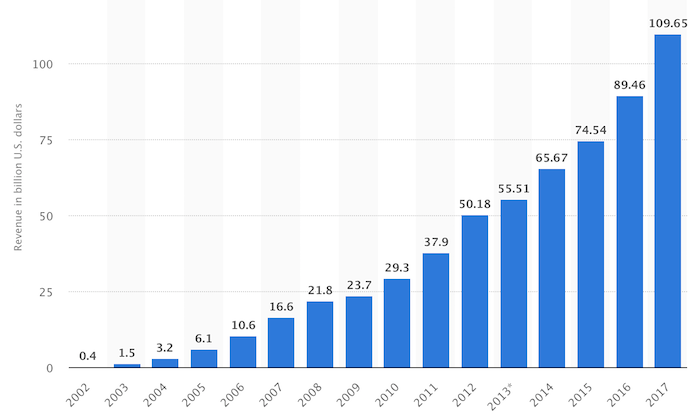
Digital marketing is going to change drastically in 2019. And sadly, you aren’t going to like a lot of the changes.
And no, I don’t mean change from a competition standpoint. You already know that each year marketing gets more expensive and more competitive. That’s just a given.
Just look at the graph above: that’s Google’s annual revenue. As you can see, during the last recession, Google made more and more money. They didn’t even have a down year.
One of the big reasons we are seeing digital marketing change so much is because of the adoption of new technologies. But also because the web is getting saturated… there are 1,805,260,010 websites on the web.
That means there is 1 website for every 4 people in this world. That’s crazy!
So, let’s dive into it… here’s how digital marketing is going to change this year.
Drastic Change #1: SEO won’t look the same
I’m starting with this one because I know you are going to hate this. SEO is moving to voice search.
In 2018, 2 out of every 5 adults used voice search once per day. But in 2020, 50% of all searches will be done through voice search according to ComScore.
And it won’t just be people speaking into their microphone on their cell phone or laptop, 30% of web browsing won’t even take place on a device with a screen. That means more people will be searching through devices like Google Home or Alexa.
I know you don’t like this because every time I blog about voice search, no one really reads the article. It’s one of those topics that SEOs just wish didn’t exist.
Why?
Well, being on page 1 doesn’t matter when it comes to voice search. Either Google pulls from your website or they don’t.
And secondly, conversions from voice search will be lower because people won’t be going to your website. Google will just be giving them the answer. At least, until we can figure out how to solve this as marketers.
But instead of looking at voice search as a bad thing, just think of it this way, no one cares to read articles about it, which means most SEOs won’t be prepared for it.
This is your chance to get ahead of your competition and gobble up that traffic before the market shifts into using voice.
Here are some articles that will teach you how to maximize your voice search traffic:
- The Definitive Guide to Voice Search
- How to Optimize for Voice Search (4 Simple Strategies)
- How to Get Extra Traffic From Voice Search
Drastic Change #2: Expect algorithm updates to be more complex
According to the Moz algorithm changelog, there were 12 updates in 2018.
Although it sounds like a lot, it isn’t. In 2017 there were 13 updates and in 2016 there were 11. In other words, Google has been averaging 12 updates per year if you combined the confirmed updates with the “unconfirmed” ones.
But let’s look at the older updates…
On July 17, 2015, Google released Panda 4.2. I know you may have hated the Panda update, but it wasn’t too bad. All Google did doing was get rid of spammy sites with low-quality content.
They didn’t want to rank sites that had thousands of 300-word blog posts with duplicate content.
Could you blame them for that?
And what about the change Google made on September 27, 2016, the Penguin 4.0 update?
If you built spammy links, they no longer would just penalize you, in most cases, they would devalue those links instead.
That means if you did something shady like buy a ton of backlinks and get caught, those links would just be de-valued instead of causing your whole site to get banned.
Now if you look at the latest algorithm updates, they are getting more complex and harder to beat. And it’s because technology is evolving so fast.
Google no longer has to just look at metrics like content and backlink count to figure out if a site ranks well. They can look at user metrics, such as:
- Are users spending more time on your site than the other ranked sites on Google?
- Are people bouncing off your site and heading back to the Google listing page?
- Are your brand queries increasing over time? Or do people not see you as a brand?
- Do people find your site more appealing… in other words, is your click-through-rate higher?
If you want to beat Google, you have to shift your mindset. It’s not about understanding Google, it’s about understanding users.
Google has one goal: to rank sites that users love the most at the top. That causes people to come back, keep using Google, and increase their overall revenue.
If you can put yourself in your users’ shoes, you’ll be better suited to do that.
The first step in doing this is to realize that when someone performs a search for any keyword, they aren’t just “performing a search,” they are looking for a solution to their problem.
By understanding the intent of their search, you’ll be more likely and able to solve their problems. You can use tools like Ubersuggest to help you with it as it will show you long tail phrases (problems people are trying to solve for).
Once you do that, you’ll be able to create the best experience, the best product, or even service that people deserve.
This is how you make your site continually rank well in the long run even as they make their algorithm more complex.
Drastic Change #3: You can’t build a company off of 1 channel
You familiar with Dropbox?
Of course, you are, it’s a multi-billion-dollar company… and you probably have it installed on your computer.
When they first came out, they tried to acquire users through Google AdWords. Can you guess how much it cost them to acquire a customer?
It ranged between $200 and $300.
Do you know how much Dropbox costs?
$60 a year.
The math doesn’t work out. Why would you spend $200 to acquire a user who only pays $60?
Even when someone pays you $60, it’s not all profit. Because of that, Dropbox had to grow using growth hacking.
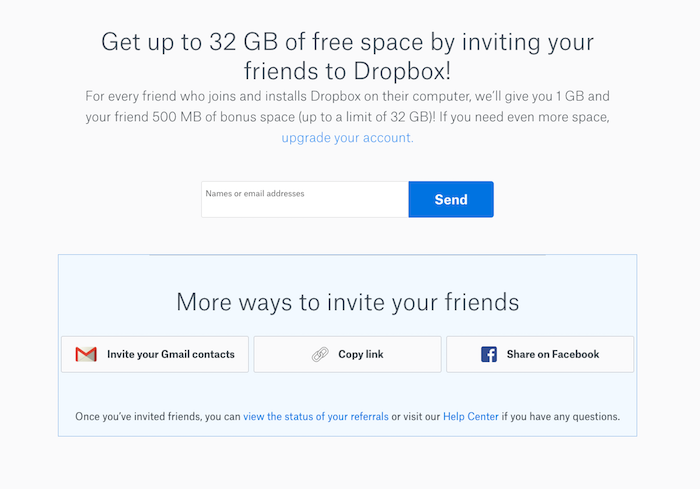
Dropbox gives you more free space the more users you invite. That’s a great example of growth hacking. And it’s how they grew into a multi-billion-dollar company.
Nowadays, if you created a similar invite flow within your company, it won’t work that well. You can no longer build a company using one channel like how Dropbox grew.
And do you remember how Facebook grew?
When you signed up, they would tap into your email address book and send out an email to every single one of your contacts inviting them to use Facebook, even if you didn’t want them to.
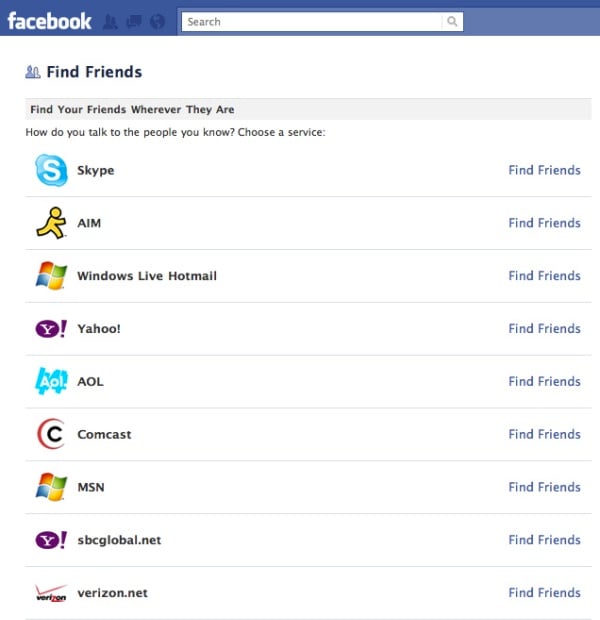
That one channel helped Facebook grow into the multi-hundred-billion-dollar company that we know today.
Nowadays, if you get an email saying your friend is inviting you to join a new site or social network, you’ll probably just ignore it.
Again, you no longer can build a big business leveraging only one marketing channel.
So, what does that mean for you?
First of all, popular marketing channels that are profitable get saturated fast and you are going to have a lot of competitors.
Due to that, you have to leverage all channels. From content marketing and paid ads to social media marketing and SEO to email marketing… you have to leverage all channels out there.
It’s your only option to doing well in the long run.
One channel won’t make your business anymore. But if you combine them all, you can still grow your business.
And hey, if something happens to one channel like an algorithm change, at least your business won’t go down too much because you are diversified.
No matter how much you love one form of marketing, never rely on it. Adopt an omnichannel approach.
Drastic Change #4: Blogging won’t work too well
I got into this a little bit at the top… the web is saturated. There are just way too many sites.
Sure, most of those 1.8 billion sites aren’t being updated and a lot are dormant.
Now out of those 1.8 billion sites, roughly 1 billion of them are blogs. That’s roughly 1 blog for every 7 people out there.
When I started my first blog in 2005, there weren’t as many people online creating sites or producing content. There also weren’t as many people using Google.
Nevertheless, Google loved content. Everyone was saying how content is king because if you produce high-quality articles Google would rank them due to one simple fact… they lacked content in their index.
But as time went by, Google no longer had a shortage of content. I would even go as far to say that there is too much content for them to choose from.
For that reason, they can be pickier if they want to rank your website or not. It’s not just about backlinks or optimizing your on-page code, it’s about providing what’s best for the end user.
That means Google is going to rank fresh content that isn’t regurgitated.
If you want to take the route of just writing dozens of articles each way and trying to rank for everything under the sun, you can. It’s still possible, but it will take more time and it will be harder as there is more competition.
More so, the way content marketing is changing in 2019, and we saw a little of this in 2018, is that you need to update your content.
No longer can your strategy be to write a lot of content. You are going to have to plan on updating your content on a regular basis.
For example, I have one person who works for me full time going through my old blog posts to update them. Also, I now only have time to write once piece of content each week. There is no way I can go through my blog and update over a thousand blog posts.
You’re going to have to do the same if you want to maintain your search traffic. If you are established and have an old blog, spend half your time updating your old content. If you are a new blog, you don’t really need to spend more than 5% of your time updating your old content.
Drastic Change #5: You’ll need to focus on new search engines and new content types
We can all agree that text-based content is saturated.
If you don’t agree with me, just scroll back up to Drastic Change #4 ????
We all know it takes forever to rank on Google. If you aren’t willing to give it a year, you shouldn’t spend much time doing traditional SEO.
What if I told you there was another form of SEO in which you can see results very, very fast?
So fast, that within 30 days (or even a few days!) you can rank at the top. And, better yet, those rankings mean you will get traffic.
Just look at my search traffic from this different kind of search engine:
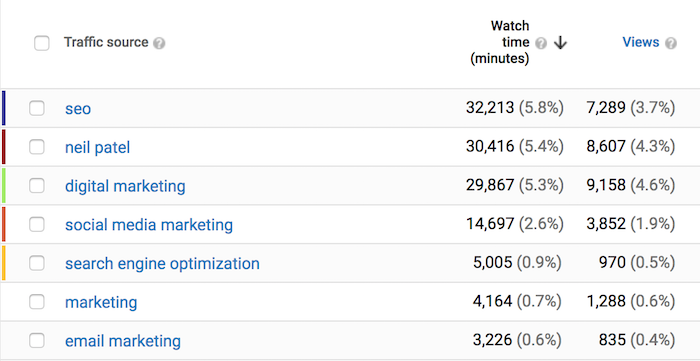
Can you guess that what search engine this is?
YouTube!
I generate 198,380 views every month from YouTube search. And those people watch my content for an average of 559,237 minutes a month.
I’m generating over 388 days of watch time each month just from YouTube search. That’s crazy!
YouTube isn’t nearly as competitive as Google. Nor is optimizing for the iTunes store if you have a podcast.
Don’t just focus your efforts on Google.
Focus your efforts on less-saturated forms of content like video and audio while optimizing for less common search engines like YouTube and iTunes.
Plus, these new channels have a very lucrative audience as they are engaged. Did you know that 45% of podcast listeners have a household income of $75,000 or more?
Here are some articles that’ll help you out:
- How to Hack YouTube SEO
- How to Create a YouTube Traffic Jam
- Is YouTube Marketing Really Worth It?
- How to Improve Your iTunes Rankings
- iTunes SEO: What Works Now
If you don’t have a big marketing budget no worries. These channels aren’t as expensive or competitive yet. You also don’t need a studio to film or record. You can just bust out your iPhone and start recording yourself.
Believe it or not, a lot of people prefer that over studio quality content as it is more authentic.
Drastic Change #6: Budgets will start shifting into conversion rate optimization
At the beginning of this post, I broke down Google’s yearly revenue.
As you can see it has continually increased even during recessionary periods.
Sure, some of it has to do with more people coming online. But also, the cost per click is rising.
Same with Facebook Ads. I literally know hundreds of affiliates who used to make over a million dollars a year in income because Facebook Ads were so affordable.
But in June/July 2017, Facebook crossed a point where they had more advertisers than inventory… at least in the United States.
Over time, that trend continued into other countries, which mean Facebook Ad costs drastically increased.
Just look at the graph below. As you can see, companies spend the majority of their budget on Google AdWords and Facebook Ads.
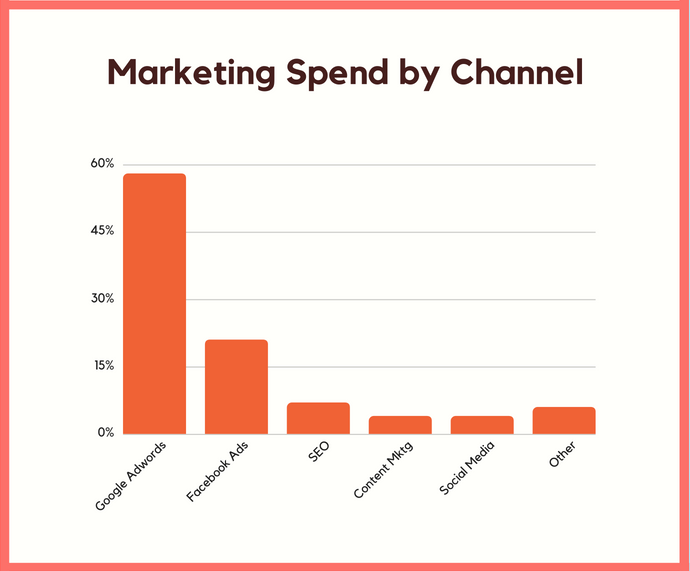
Now let’s look at what channel produces the highest ROI. Can you guess what it is?
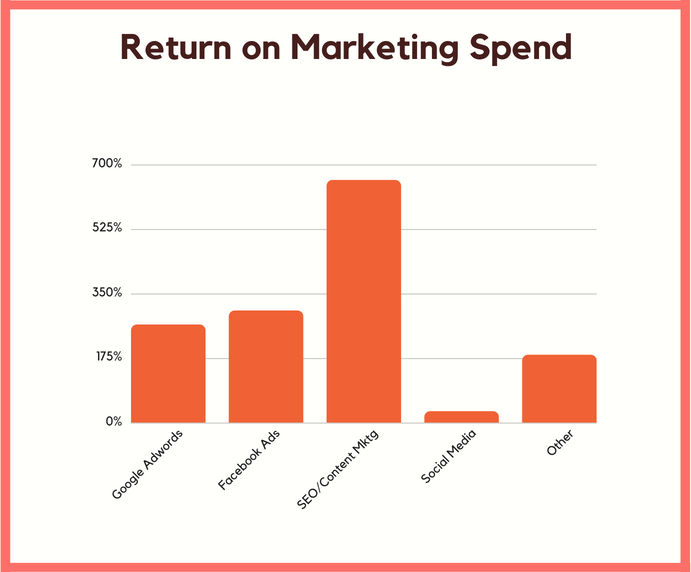
SEO, right?
Although the chart shows SEO produces the biggest ROI, in reality, it is the second runner up.
What’s hard to see because it is classified as “other” in the chart and it is grouped with other marketing channels, is conversion rate optimization. And that channel produced the biggest ROI by far. It beat SEO by leaps and bounds.
It was just hard to see that because not enough companies spend money on conversion rate optimization. And when they do, it is a very small portion of their budget.
In 2019, start running A/B tests. Whether you use Crazy Egg or any other solution out there, don’t forget to include it in your marketing arsenal.
Drastic Change #7: Marketers will learn what funnels are
You may have heard of marketing funnels or sales funnels, but I bet you aren’t using them.
And no, a funnel isn’t something as simple an email sequence.
Because ads are getting more expensive, you’ll find yourself doing things like running more A/B tests (as I mentioned above), but it will only help so much.
As your competition also starts running A/B tests, you’ll find that ad prices will go up again.
So, what should you do?
You are going to have to upsell and downsell your visitors. I learned this tactic from Ryan Deiss years ago and he was spot on.
The best way to generate revenue isn’t to get more customers, it’s to get more money out of your existing customers.
Sure, your customer base is only going to spend so much. But if you offer upsells and downsells you can see increases in revenue from 10% to 30%. And some cases you’ll even double your revenue.
The key points with upselling and downselling are as follows:
- Offer at least 2 or 3 upsells (or downsells).
- If people don’t take the offer, considering offering the same offer again with monthly installments.
- The best offers are speed and automation. In other words, if you can help people get results faster or in an automated way, they are much more likely to take it. People are lazy and impatient, hence speed and automation always win when it comes to upsells.
At this point you are probably wondering how to do all of this upselling or downselling, right?
You have to build a marketing funnel. The good news is, you don’t have to hire a developer, you can use solutions like Click Funnels and Samcart.
They are easy to use, and you can get started in minutes.
Conclusion
Expect 2019 to be a crazy year. What worked once, won’t work in 2019.
Technology is more sophisticated and with things like machine learning and artificial intelligence knocking at the door, we are going to be on a crazy rollercoaster.
Don’t be afraid, though!
If you take the concepts above and start working on them now, you are going to be in for a much smoother ride with fewer downs and more ups.
So what do you think is going to change in 2019?
The post How Digital Marketing Will Change in 2019 appeared first on Neil Patel.
Powered by WPeMatico

